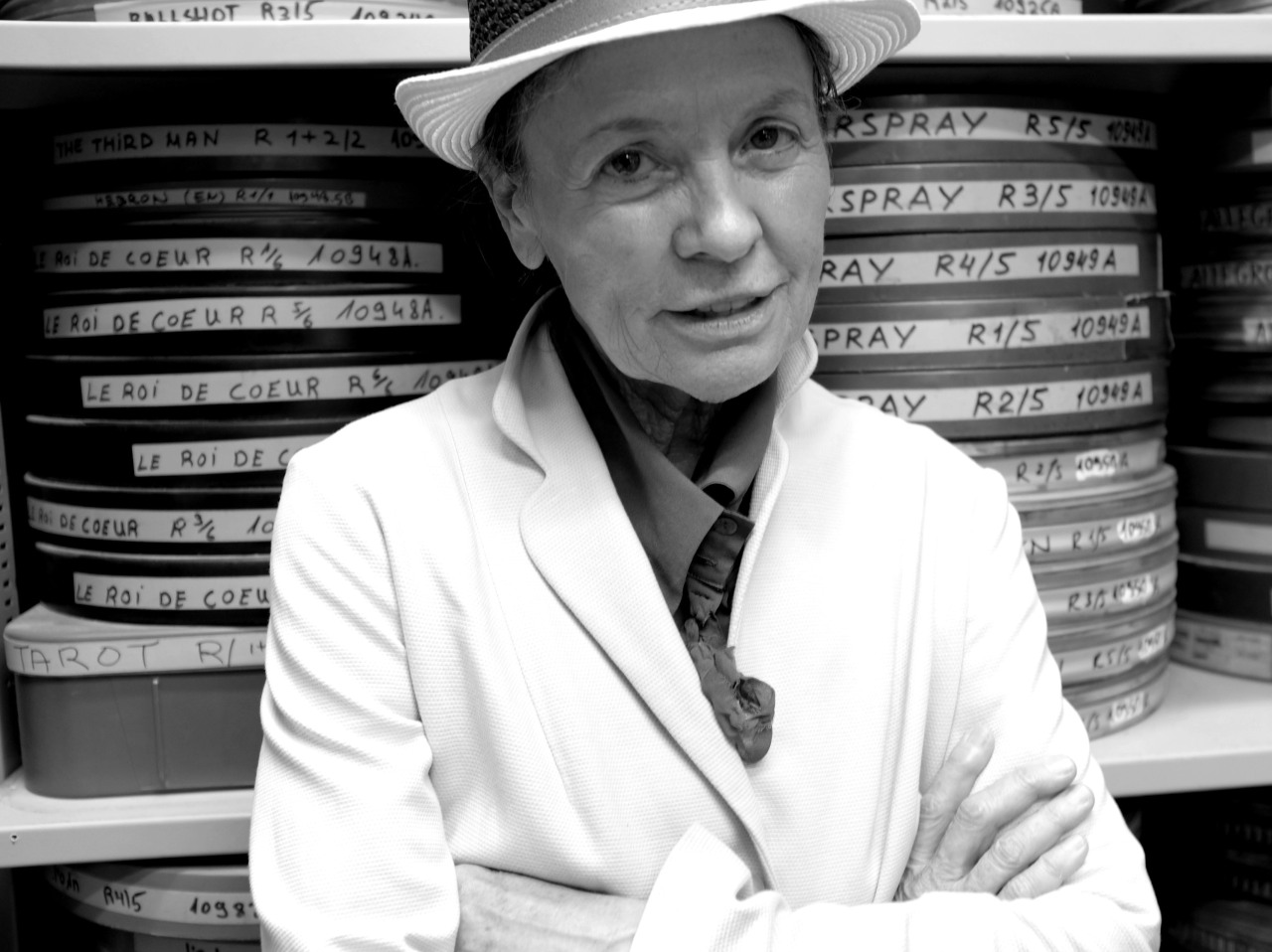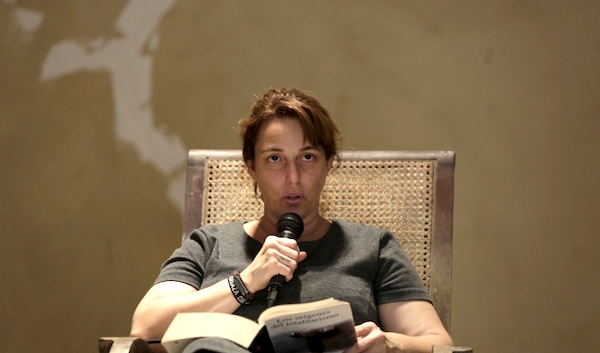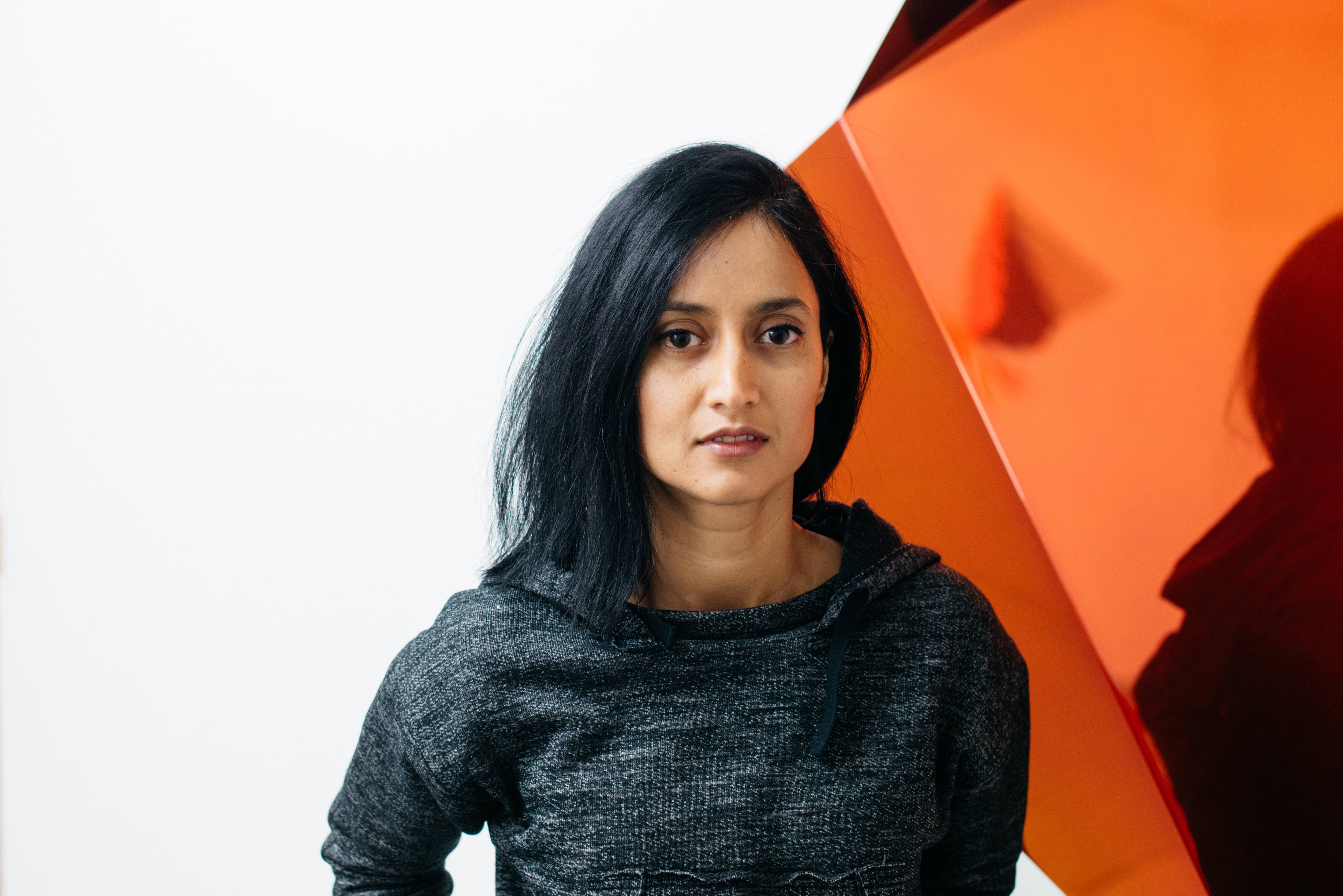Today, H A P P E N I N G has chosen #5WomenArtists that we have written about in the past, as a strong reminder of the work they are doing to not only promote gender equality, but also to secure the existence of free expression in the arts.
Tania Bruguera
Born in 1968 in Havana, Cuba, Tania Bruguera is best known as a performance artist and activist whose work is deeply intertwined with the political history of her country. Despite being detained several times in the past few years by authorities–a result of the highly political nature of her work–Bruguera has not yielded to her country’s censorship. She continues to be one of the most influential international artists fighting for the right to exercise free expression in contemporary art. Last October, Bruguera announced via a YouTube video that she would be running for the 2018 presidential elections in Cuba. Her utopian bid–Cuba is a one-party state, so an individual cannot run for president–served a strong statement; it denounced the “culture of fear” plaguing her country.
Her work is currently on show at The Barnes Foundation, Philadelphia, as part of the group show “Person of the crowd: the contemporary art of flânerie”, running until May 22.
Rana Begum
Photo courtesy Sarah Bates.
Born in Syhlet, Bangladesh in 1977, Rana Begum moved to the UK in the 90s, where she attended university between 1995 and 2002, obtaining a MFA in painting from the Slade School of Fine art in London. Represented by Third Line — Dubai’s most prestigious gallery, Begum is also the recipient of the 2017 edition of the coveted Abraaj Group Art Prize. Her work is both colourful and minimalist, having embraced op-art, alongside Islamic art and architecture.
Influenced by American artist Sol LeWitt, Rana Begum is one of the artists chosen to exhibit at “Sol LeWitt: A Tribute” currently on display at the Gemeentemuseum Den Haag, (The Hague), until April 9.
Fiona Banner
In the 90s, Fiona Banner was one of the artists graduating from London’s Goldsmiths University who came to be known under the collective “Young British Artists”. Ever since her beginnings, her practice has focused on exploring both the power and the limitations of her medium of choice: language. Her impressive career includes a commission for Tate Britain, where she installed a real-life fighter plane, hanging from the ceiling of the museum’s Duveen Galleries for her project Harrier and Jaguar.
Recently, Banner was one of the more than 200 artists joining the international committee “Hands off our revolution”, dedicated to fighting rise of rightwing populism in Europe, the US and elsewhere. Banner will be featured in a solo show at the De Pont Museum in Tilburg, The Netherlands, starting April 29.
Corita Kent
Throughout her life, Corita Kent managed to reconcile two seemingly opposite positions: she was a nun, but also an educator, an activist and an artist. A pioneer of pop-art, Kent created highly political artworks throughout the 60s, at a time when United States was finding its social conscience. Her artistic practice, aligned with the “make love, not war” slogan, has largely been associated with 60s American counterculture.
Largely under-represented in both the US and Europe, Kent has recently found renewed recognition. Over the past two decades, her work has been featured in an impressive number of exhibitions worldwide. Today, her work is on show at LACMA as part of the group exhibition “An Irruption of the Rainbow: Color in 20th-Century Art”, running until July 23.
Laurie Anderson

Laurie Anderson © Anne Maniglier
In many ways, Tania Bruguera’s practice in Cuba, resembles that of Laurie Anderson’s in the US; mimicking the groundbreaking work Anderson has been doing for over the last forty years. During her decades-long career, Anderson’s work has revolved around one of the most pressing themes in American art: the use of technology as a tool for power and its authoritarian implications. Anderson is known for her work with Guantanamo prisoners, as well as her interest in the surveillance of US citizens and law enforcement violence. Throughout her career, her work has strongly condemned the acts of the US government. Together with Fiona Banner, she is one of the 200 artists who have joined the movement “Hands off our revolution.”
Anderson is also a musician. In 1981, her song "O Superman” topped the international charts. She is currently on tour in the US, moving on to the UK in the spring.













